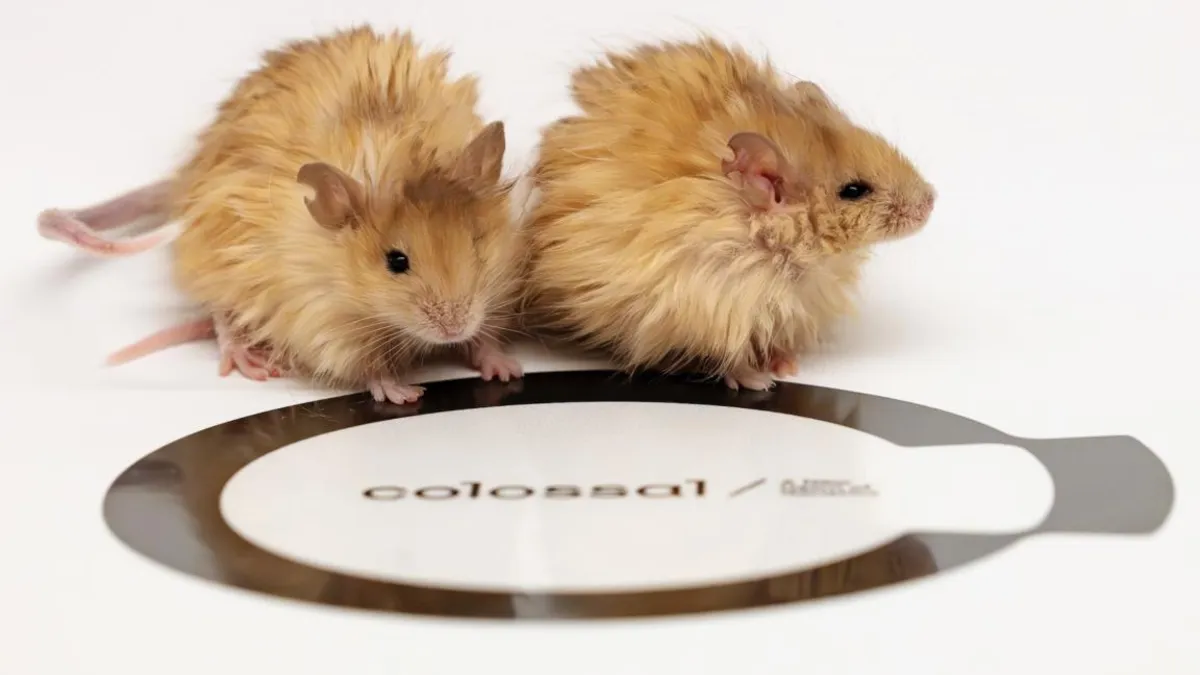
On Tuesday, the ambitious team at Colossal Biosciences announced a groundbreaking development in their quest to revive mammoth-like creatures: the creation of woolly mice. These genetically modified mice feature long fur reminiscent of the iconic woolly mammoth, achieved through the simultaneous editing of up to seven genes associated with hair growth, color, and texture. However, it is essential to clarify that these woolly mice are not hybrids of mice and mammoths; rather, the genetic modifications stem from research primarily conducted on mice.
The primary focus of this initiative is the ability to perform simultaneous editing of multiple genes. This capability is crucial for the future development of a viable mammoth genome by integrating significant genetic traits into the elephant's DNA. The research team acknowledges that the task is not without its challenges, particularly considering the lengthy gestation period of elephants, which lasts around 22 months, and their complex reproductive timelines. These factors complicate rapid experimental assessments required for such ambitious projects.
Moreover, ethical considerations regarding the manipulation of elephants, an endangered species with intricate social structures and advanced cognitive abilities, necessitate alternative approaches for functional testing. Consequently, the researchers opted to utilize mice, a species that has been a cornerstone of genetic research for over a century.
The woolly mice project leverages the advantages of mice for observing genetic mutations. Over the years, a vast array of mutations affecting mouse fur—altering its color, texture, and length—has been documented. The alterations that lead to these variations have been identified at the DNA level, allowing researchers to test the genetic differences between the mammoth and its closest living relative, the elephant.
While the team emphasizes the genetic changes made in their research, they have primarily focused on alterations previously observed in mice. Therefore, even though the connection to the woolly mammoth is somewhat peripheral, the announcement of the Colossal Woolly Mouse serves to highlight the innovative gene-editing techniques being developed.
Colossal Biosciences has showcased impressive advancements in gene editing technologies. The research team employed two distinct approaches to gene editing, one of which utilizes the well-known CRISPR/Cas9 system. This method creates breaks in both strands of DNA at specific sequences, guided by RNA. In contrast, the second technique involves a cytosine base editor, which allows for more precise mutations by converting cytosine (C) into thymidine (T).
Both systems require the mixing of proteins and guide RNA, followed by the application of rapidly shifting electrical currents to facilitate the entry of these complexes into mouse stem cells for DNA editing. The researchers conducted extensive testing on various guide RNAs to identify the most effective options for specific gene editing.
The results showed that the CRISPR/Cas9 system led to more extensive edits in the DNA, increasing the likelihood of successful gene editing across both chromosome sets. However, this method also raised concerns about potential off-target effects, where unintended parts of the genome might be altered. Conversely, the cytosine base editor demonstrated fewer off-target edits but was less active, prompting researchers to develop methods for identifying unedited cells.
The team selected a wide range of genes affecting mouse fur, including those regulating follicle cell behavior and keratin genes responsible for fur structure. Depending on the number of genes edited—up to seven—the resulting mice exhibited various fur phenotypes. Notably, some mice developed a long, golden coat with a shaggier appearance due to kinked hair shafts. However, attempts to replicate a fat metabolism mutation found in mammoths did not yield observable changes.
While the creation of woolly mice is a remarkable technical achievement, the primary focus lies on the advancements in gene-editing techniques that enable researchers to target multiple genes efficiently. Nevertheless, the journey toward resurrecting the woolly mammoth remains complex. The targeted changes primarily produce truncated, non-functional protein versions, which are relatively easy to achieve through gene editing. Ultimately, the mammoth project will require the successful integration of dozens, if not hundreds, of genetic modifications.
As the field of de-extinction continues to evolve, Colossal Biosciences stands at the forefront of innovative genetic research. The announcement of the woolly mice, while a significant milestone, also underscores the ongoing challenges and possibilities that lie ahead in the quest to bring back the majestic woolly mammoth.